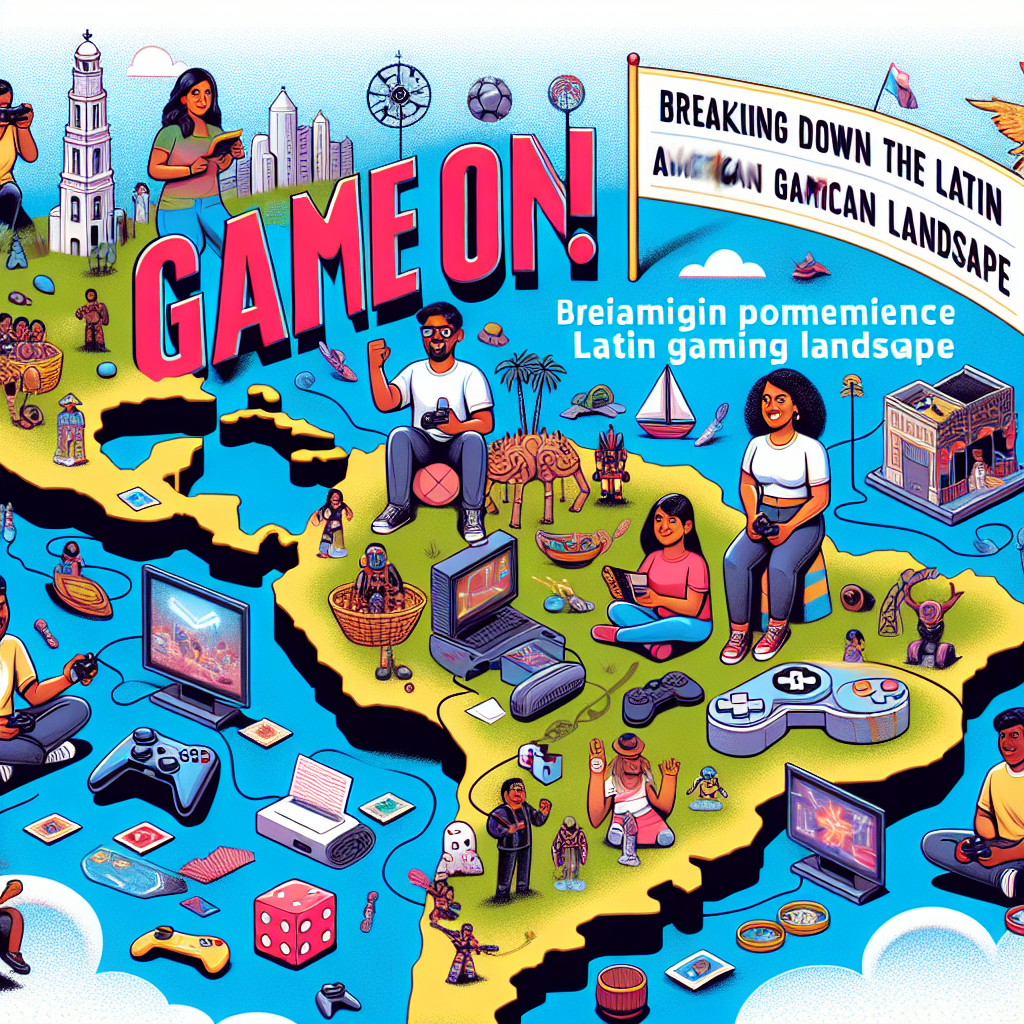Game On! Breaking Down the Latin American Gaming Landscape
The gaming industry has evolved into a global powerhouse, transcending geographical borders and cultural barriers. Among the myriad of regions driving this growth, Latin America stands out as a vibrant hub for innovation, creativity, and engagement in the gaming sector. As we delve deeper into the gaming landscape of Latin America, we can glean insights into its unique characteristics, burgeoning market potential, and the cultural nuances that drive its gaming communities.
A Booming Market
Latin America’s gaming market has shown remarkable growth in recent years. According to Newzoo’s Global Games Market report, the region is expected to surpass $4 billion in revenue, with Brazil and Mexico leading the charge. Brazil, the largest gaming market in Latin America, is home to a diverse player base that includes hardcore gamers as well as a growing mobile gaming audience. Similarly, Mexico is not far behind, with mobile games becoming increasingly popular due to their accessibility and affordability.
The rise of internet usage and smartphone penetration has played a pivotal role in bolstering the gaming market. A younger demographic, keen on digital entertainment, is driving demand for both casual and competitive gaming. In countries like Argentina, Colombia, and Chile, gaming is becoming a dominant form of entertainment, further fueled by a robust esports scene.
A Unique Cultural Influence
Cultural dynamics in Latin America significantly shape its gaming landscape. The region is characterized by its rich and diverse history, with indigenous cultures, colonial influences, and modern innovations intertwining to create a unique narrative. This cultural tapestry is reflected in the games developed and played across the region.
Local game developers are increasingly drawing inspiration from their heritage, creating games that resonate with their audience. Titles such as “Mulaka,” which draws on the folklore of the Tarahumara people, and “Lienzo,” a studio focusing on Mexican narratives, showcase the potential for culturally relevant gaming experiences. These games not only highlight local traditions but also foster a sense of pride and community among players.
The Rise of Esports
Esports has emerged as a significant driving force within the Latin American gaming scene. Major tournaments, such as the Liga Latinoamérica for League of Legends and the Copa América for Counter-Strike: Global Offensive, are witnessing unprecedented participation and viewership. The popularity of esports has also attracted sponsorship deals, investment from major companies, and the establishment of professional teams.
Colombia, in particular, has garnered attention for its enthusiastic esports community. The nation has even taken steps to integrate esports into educational systems, reflecting a commitment to recognizing gaming as a legitimate career path. Brazil, with teams like INTZ and paiN Gaming, has established itself as a powerhouse in the esports arena, capturing the interest of fans and brands alike.
Challenges and Opportunities
While the Latin American gaming market is brimming with potential, it is not without its challenges. High levels of piracy and an underdeveloped payment infrastructure have hindered the growth of legitimate game sales. Piracy is rampant due to economic disparities and a lack of access to affordable gaming options. However, initiatives to promote digital marketplaces and local game development can help mitigate these issues.
Moreover, there is a need for greater investment in broadband infrastructure to improve connectivity, particularly in rural areas. As online gaming becomes increasingly reliant on stable internet access, this becomes a critical hurdle that needs to be addressed.
Looking Ahead
The future of gaming in Latin America looks bright, with a promising influx of innovation and a vibrant community. As more developers embrace the cultural stories and experiences unique to the region, gamers can expect to see an increasing number of titles that speak to their identities. Additionally, partnerships between local developers and international studios will likely foster collaboration, allowing Latin America to gain a foothold on the global gaming stage.
In conclusion, Latin America’s gaming landscape is evolving rapidly, driven by passionate players, innovative developers, and a dynamic culture. As the region continues to grow and adapt, it holds the potential to not only contribute significantly to the global gaming market but also to redefine gaming narratives through its unique perspectives. So, whether you’re a gamer, developer, or just a curious observer, the message is clear: game on!




